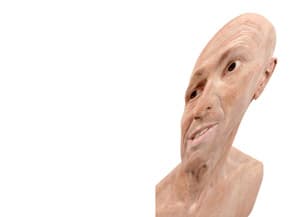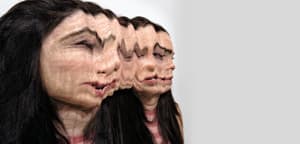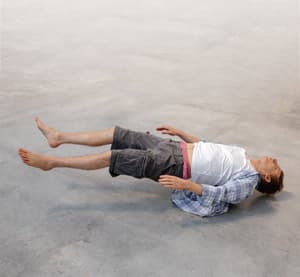
Liminal body
The bodies in this room are each in a perpetual transition, caught between one state of being and another. For Keith Edmier, time and space are elastic concepts. Beverly Edmier, 1967 depicts the artist’s mother—pregnant with the foetus visible in utero—dressed as Jacqueline Kennedy on the day of her husband’s assassination. By conflating personal history and collective cultural memory, Edmier deliberately confuses truth and fiction.
Tony Matelli’s Josh appears to be both falling and levitating. The artist uses spatial ambiguity as a metaphor for the Buddhist doctrine of non-self (anatta) which asserts that living beings have no permanent form. By seemingly defying the laws of physics, Matelli encourages us to reorient our perspective on human existence.
Evan Penny’s ‘stretch projects’ blur the distinction between two and three dimensions. After distorting the human body via two-dimensional image manipulation, he reproduces the image in sculptural form. Penny highlights that a representation is never fixed nor stable.
Produced from several casts of various body parts, Berlinde de Bruckyere’s Elie oscillates between conflicting states. The figure’s pallid skin evidences death, however, the agonised pose suggests enduring trauma. By constructing monstrous but not inhuman forms through the idiom of hyperrealism, de Bruckyere draws attention to the artificiality of the image-making process.







